My boyfriend always jokes about being scared that I'm going to run off with a Spanish guy. (No clue why this fictitious, seductive man is Spanish, but apparently he is.)
And I'll admit that I DID have a certain Spaniard on my mind when I decided to finally visit Barcelona.
But it wasn't a young, hunky footballer or flamenco singer or anything like that that I was dreaming about. The guy on my mind was a dead one: Antoni Gaudi.
Antoni Gaudi was one of Catalunya's most famous architects. In fact, I would argue that he's one of the most famous modern architects in Europe. Gaudi practiced a form of architecture known as Catalan Modernism, which is an Art Nouveau-style architecture that is influenced by nature and the natural shapes and forms found in the world around us.
Many of Gaudi's most famous works can be found in Barcelona — and I wanted to see as many of them as possible.
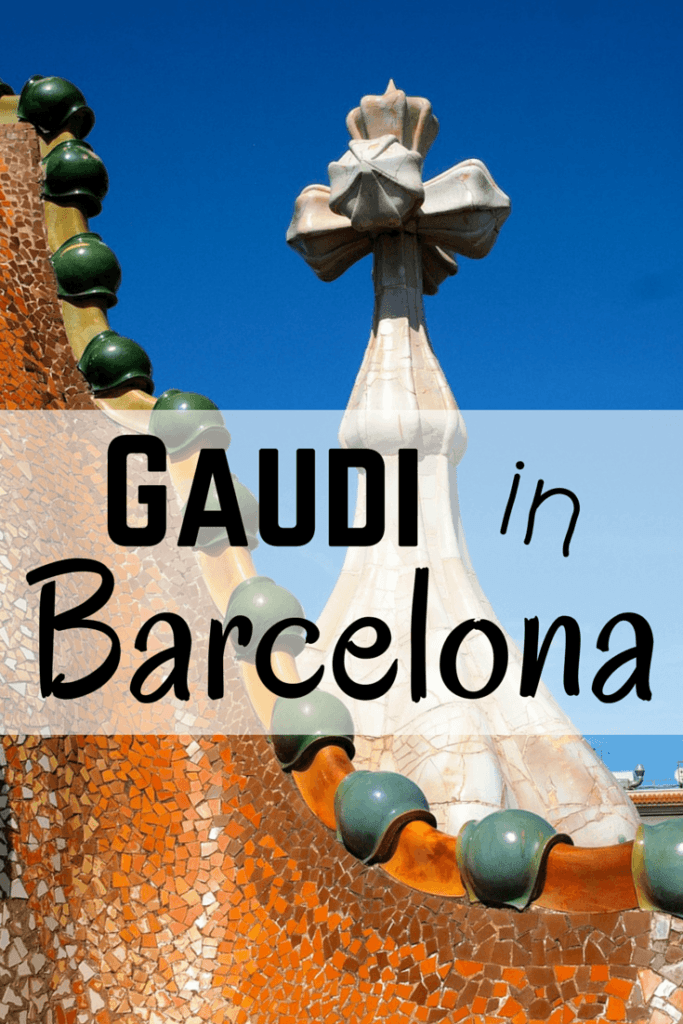
On my very first morning in Barcelona, I hopped on the metro to Passeig de Gracia to join a free Gaudi walking tour with Discover Walks Barcelona. We started in front of the iconic Casa Batllo — but we didn't talk about this Gaudi work right away.
First, we got a little history lesson about modernism in Barcelona. Back in the late 1800s, the area where Passeig de Gracia is today wasn't even part of Barcelona; it was a village of its own, connected to Barcelona by road. But, as the city got more and more crowded, wealthy citizens began moving further and further out so they could build bigger homes.
Today, the block on which Casa Batllo sits is actually home to three major modernist works, all built in the early 1900s.
There's Casa Lleó Morera (designed by architect Lluís Domènech i Montaner), with its floral designs. There's Casa Amatller (designed by Josep Puig i Cadafalch), designed for a famous chocolatier to loosely resemble a Flemish house. And there's Casa Batllo, designed by Gaudi.
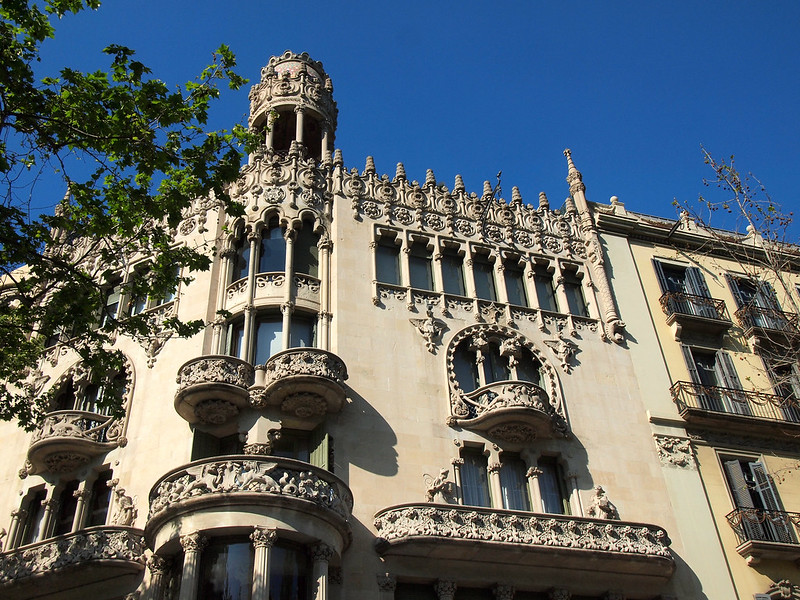
Casa Batllo
Casa Batllo is one of the most recognizable Gaudi works in Barcelona. It was originally built in the 1870s, and then Gaudi was hired in the early 1900s to redesign it by the Batllo family, who wanted the tallest, most noticeable house on the prestigious block. The result is a house that certainly is eye-catching, with oval windows, mosaic details, and a tiled roof that looks like the back of a dragon. In fact, Casa Batllo is often called the “Dragon House,” or the “House of Bones” because of the skeleton-like exterior.
Inside, Casa Batllo is just as interesting as it is outside. The rooms contain very few straight lines. In the middle of the house, a tiled “light well” pulls sunlight down into the lower floors in a pretty genius design. On the roof, you can see the dragon's back, as well as the home's interesting chimneys.
Even though the other Modernist homes on the block are impressive, this one is hands-down my favorite.
IF YOU GO
Address: Passeig de Gràcia, 43 (near Passeig de Gracia metro stop)
Website: https://www.casabatllo.es/en/
Price: 21.50 Euro per adult (ticket includes free audio guide and augmented virtual reality device, which lets you see what the house would have looked like when people lived in it)
TIP: Go early in the morning or late in the afternoon to avoid long lines at the house, or book your ticket in advance online.
Sagrada Familia
The second major stop on my Gaudi walking tour was the Sagrada Familia (or, more correctly, Basílica i Temple Expiatori de la Sagrada Família) — easily Gaudi's most famous work in Barcelona. This Roman Catholic church is regarded as Gaudi's opus; his most impressive work of art.
Construction of the church began in 1882, and Gaudi got involved in 1883, designing a Modernist masterpiece that is completely and utterly unique. In the early 1900s, Gaudi became obsessed with the project, to the point where he spent the last decades of his life living in the crypt as work progressed. The church was not even 25% complete when Gaudi died from injuries suffered in a tram accident in 1926, and in fact the church STILL isn't completed today.
The church has two different facades — the Nativity facade (completed by Gaudi) and the Passion facade (still being worked on). You can see the clear difference in style between the two facades; no one can completely replicate Gaudi's style, even when working off his original designs.

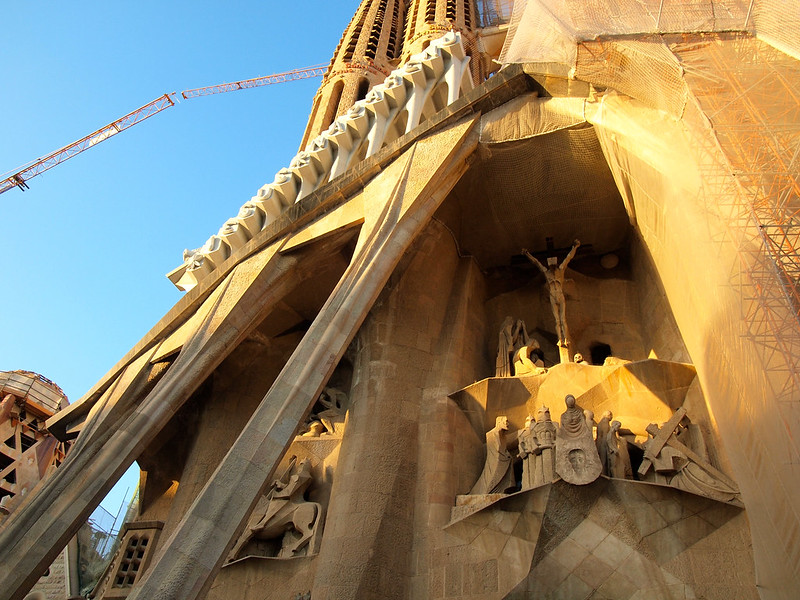
Inside, the church will make your jaw drop. The towering detailed ceiling, the huge stained glass windows, and the sheer scale of the building makes the Sagrada Familia a must-visit. No matter how many churches you've seen on your travels, I promise you've never seen one like this.
IF YOU GO
Address: Carrer de Mallorca, 401 (the Sagrada Familia metro stop)
Website: http://www.sagradafamilia.cat/sf-eng/
Price: 15 Euro for regular visit; 19.50 Euro for regular visit and a visit to one of the towers; 24 Euro for a visit with audio guide and towers
TIP: Lines to buy tickets at Sagrada Familia can be really long. Book a timed ticket online ahead of time, which lets you skip the line and just show up at your appointed time.
Park Guell
Park Guell wasn't included in my Gaudi walking tour, but my guide highly suggested I check it out. So I hopped on the metro and walked up the hill to the park, located on Carmel Hill. The park — which covers about 45 acres — was built between 1900 and 1914, designed by Gaudi and funded by Eusebi Güell.
Park Guell was originally conceived as a prestigious housing development surrounded by beautiful nature. The housing part of the original plan was never fully realized, however, and the park was opened to the public in 1926.
Today, Park Guell has two major sections: the free public section filled with gardens and shaded passage ways, and the “Monumental Zone,” which now requires a timed ticket to visit. The Monumental Zone is where you'll find Gaudi's stamps: the gingerbread-like houses at the park's entrance, the mosaic salamander, the 84 Doric columns in the Hypostyle Room, and the serpentine mosaic bench encircling the terrace.
The park can get really crowded during high season (hence why you now need a ticket for the most popular part of the park), but I really enjoyed spending a couple hours there.
IF YOU GO
Address: Carrer d'Olot (you can walk there from the Lesseps metro stop)
Website: http://www.parkguell.cat/en/
Price: 7 Euro to visit the Monumental Zone
TIP: Just like for Sagrada Familia, it's smart to book a timed ticket for Park Guell online before you go. This will save you standing in line, and will ensure you get to visit the park when you want to.
Casa Mila / La Padrera
The last notable Gaudi work in Barcelona is Casa Mila (also known as La Padrera or “the Rock Quarry”). We saw this on my Gaudi walking tour from across the street, and learned that it's basically considered an architectural marvel because of the fact that it has no straight lines. It was the last civil work designed by Gaudi in Barcelona, built between 1906 and 1912 (after that, Gaudi devoted all of his attention to Sagrada Familia).
Casa Mila was commissioned by Pere Milà i Camps and his wife Roser Segimon i Artells, and is recognizable by its wavy stone exterior, twisted wrought iron balconies, and chimneys on the roof.
Gaudi — who was inspired by religion as much as nature in many of his designs — originally had a large Virgin Mary statue sitting on the roof of Casa Mila. But Roser Segimon i Artells hated it and ordered Gaudi to move it. So he did — to the rooftop directly across from Casa Mila, so the lady of the house would still have to look at it every day. That Gaudi — what a cheeky guy.
Today, La Padrera is a cultural center, and also home to some private apartments and offices. A visit gets you access to two separate museum spaces, as well as an in-depth look into Gaudi's style and work.
IF YOU GO
Address: Provença, 261 – 265 (Diagonal metro stop)
Website: https://www.lapedrera.com/en/home
Price: 20.50 Euro per adult, or 25 Euro with a guide
TIP: Like with the other Gaudi buildings, you can book a ticket for Casa Milo online.
Visiting all of these Gaudi sites in Barcelona certainly doesn't make for a cheap visit. BUT, if you're interested in learning more about this unique form of architecture, there's really no better way to do it. All of these buildings (along with a few other Gaudi works) are now recognized by UNESCO for their creativity and innovation.
Personally, I'd say Sagrada Familia is really the star. If you're only going to pay to go inside one Gaudi work, make it this one. (And stay tuned, because I'll share more photos of it later!)
Where to stay in Barcelona
If you're going to Barcelona to see some Gaudi works, you'll want a nice place to rest your head at night! I can personally recommend the Grupotel Gran Via. I got a small room with a comfy bed for a really reasonable price right on Gran Via.
Or you can search other hotels:
Are you a fan of architecture? How about Antoni Gaudi? Have you visited any of these places in Barcelona?

Amanda Williams is the award-winning blogger behind A Dangerous Business Travel Blog. She has traveled to more than 60 countries on 6 continents from her home base in Ohio, specializing in experiential and thoughtful travel through the US, Europe, and rest of the world. Amanda only shares tips based on her personal experiences and places she's actually traveled!

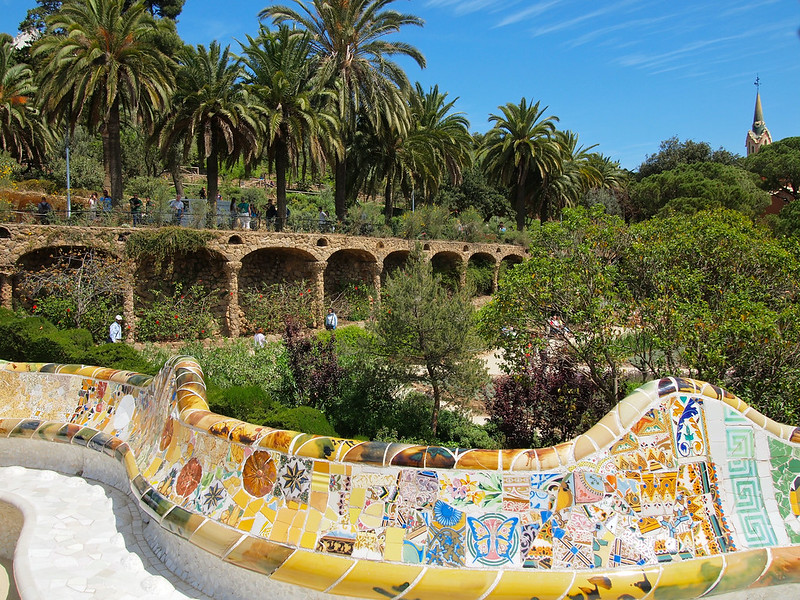
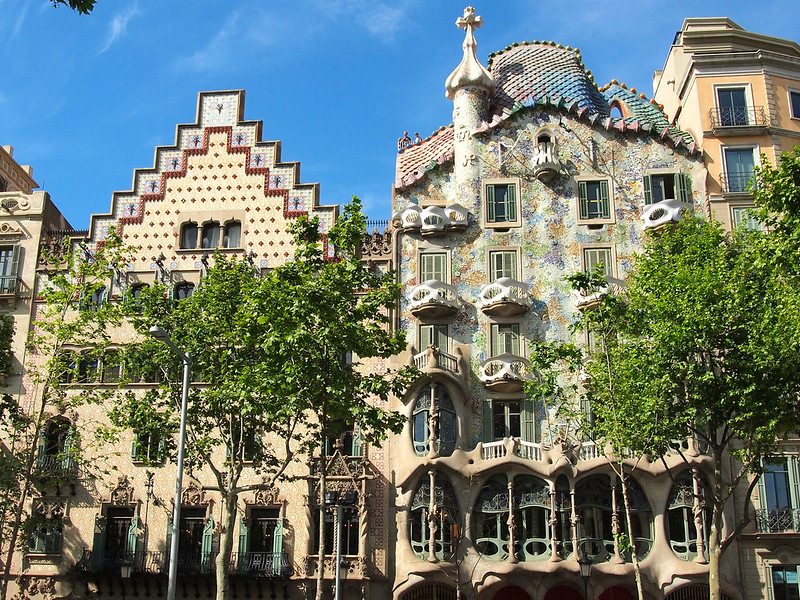
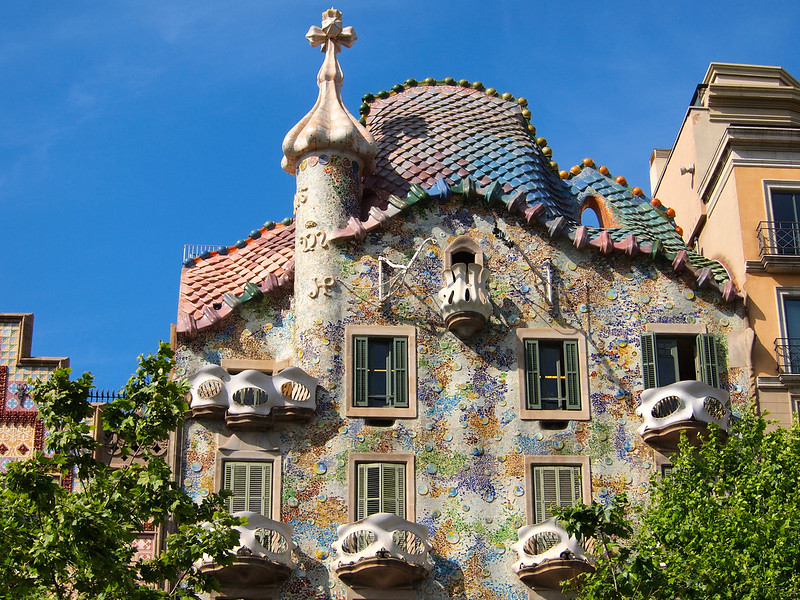


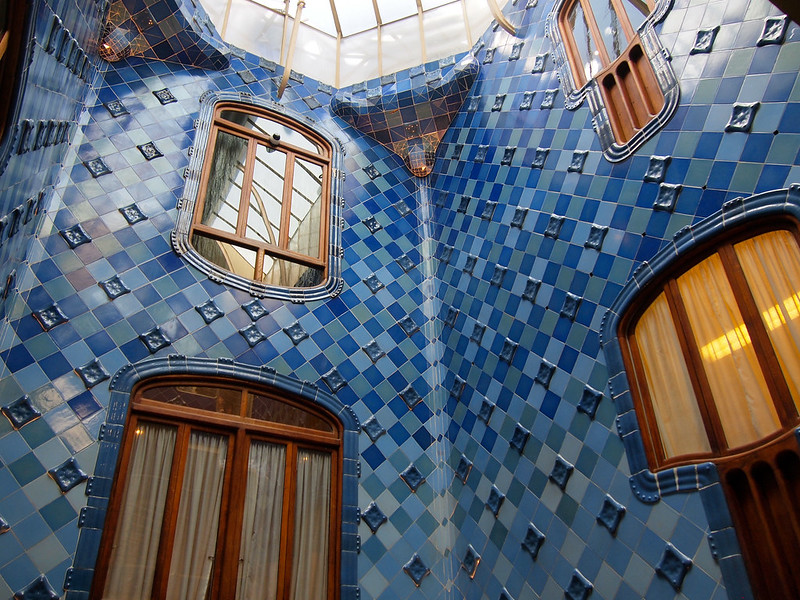

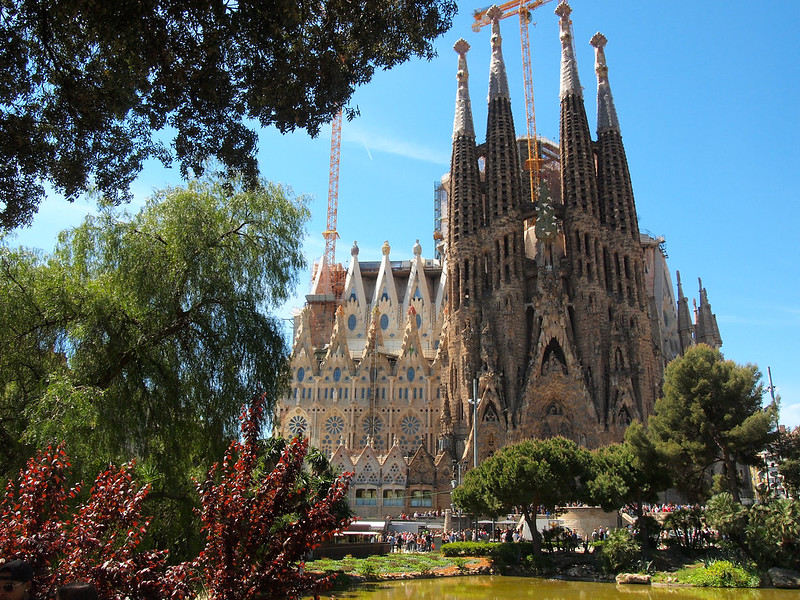
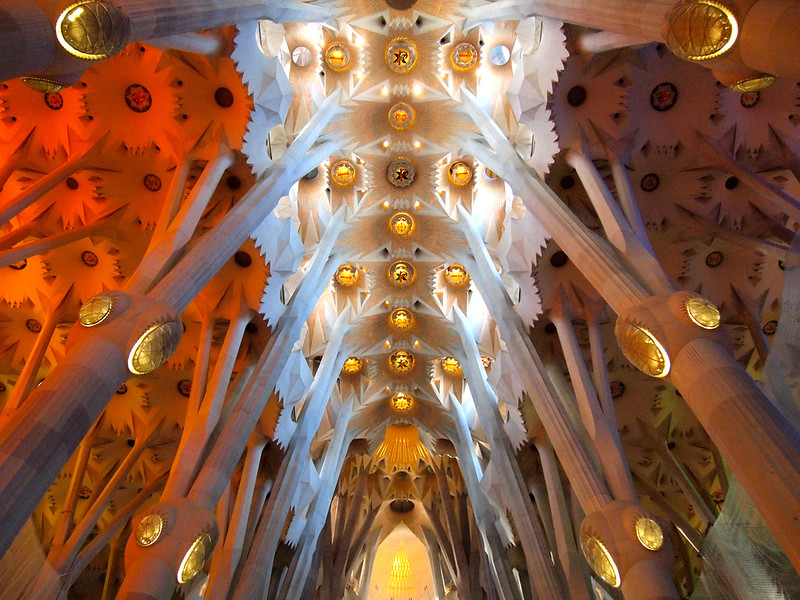
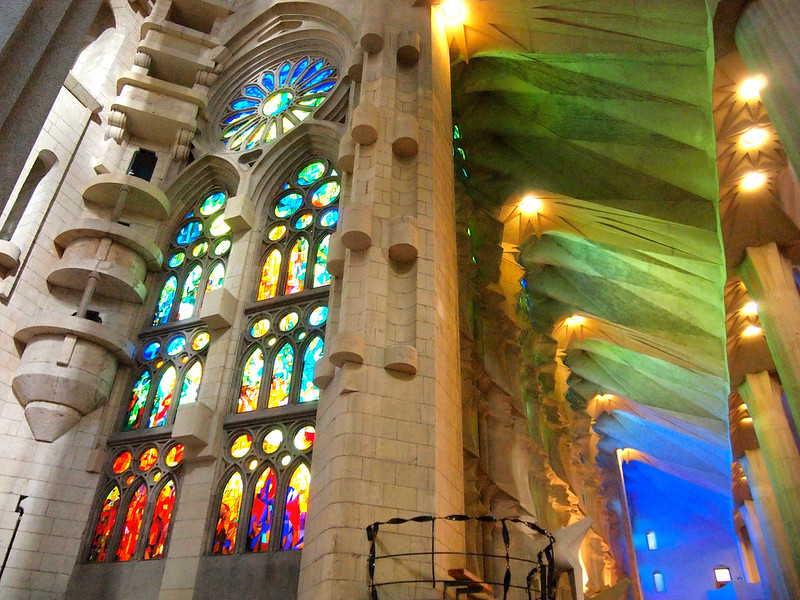

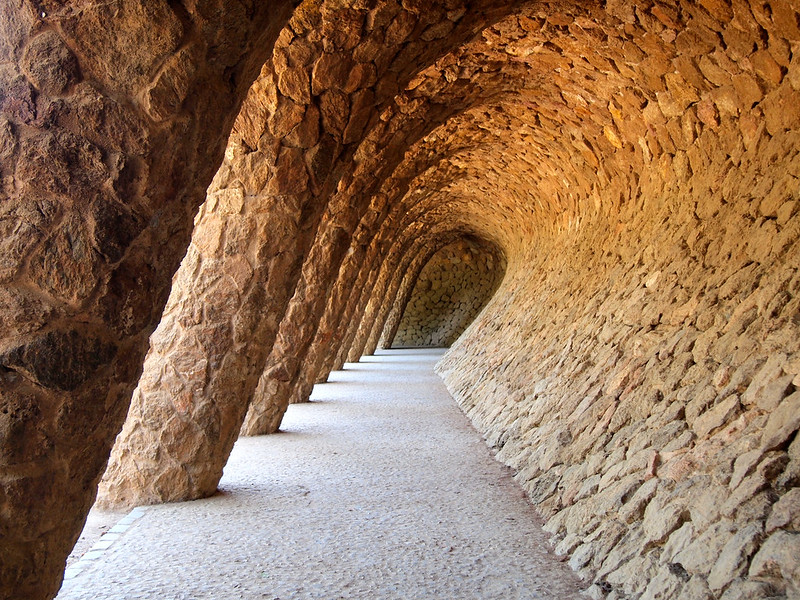
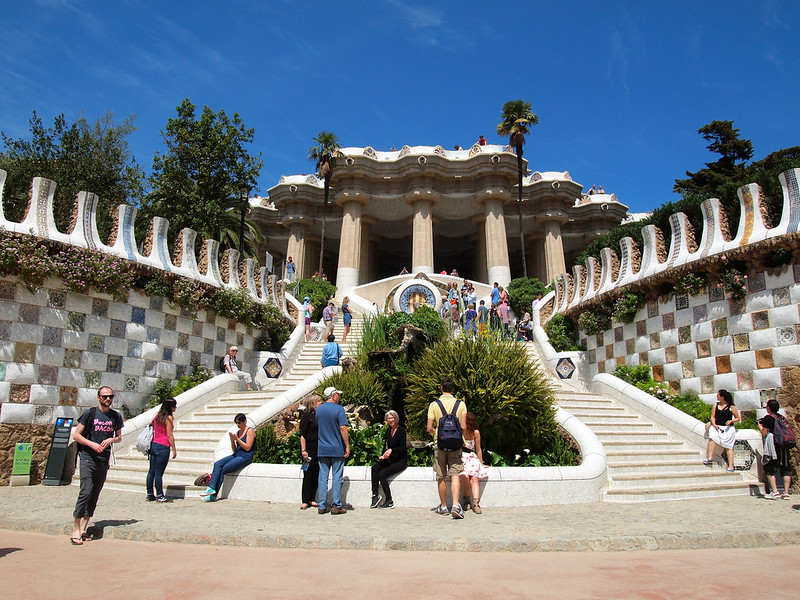
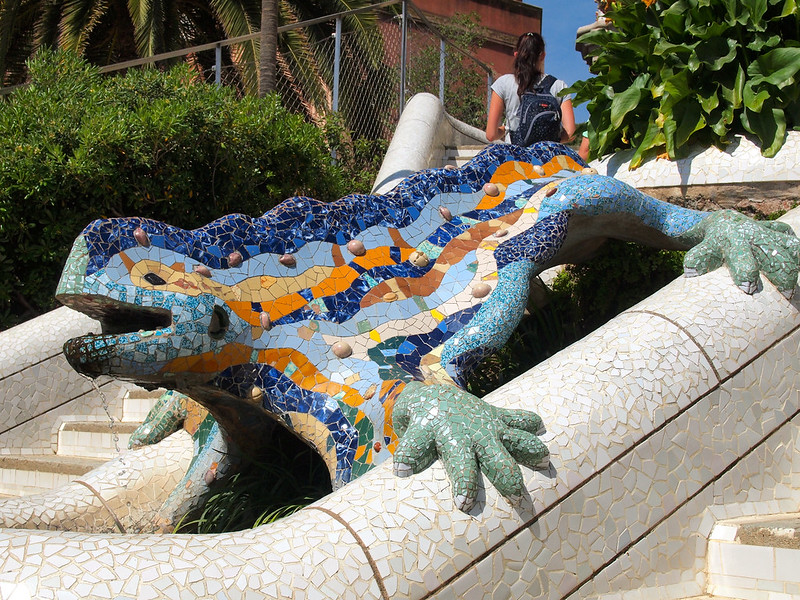

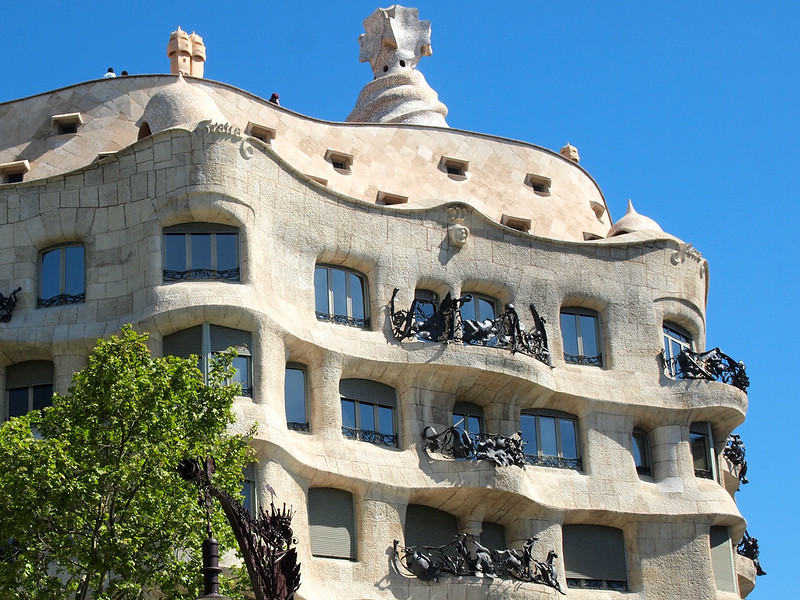
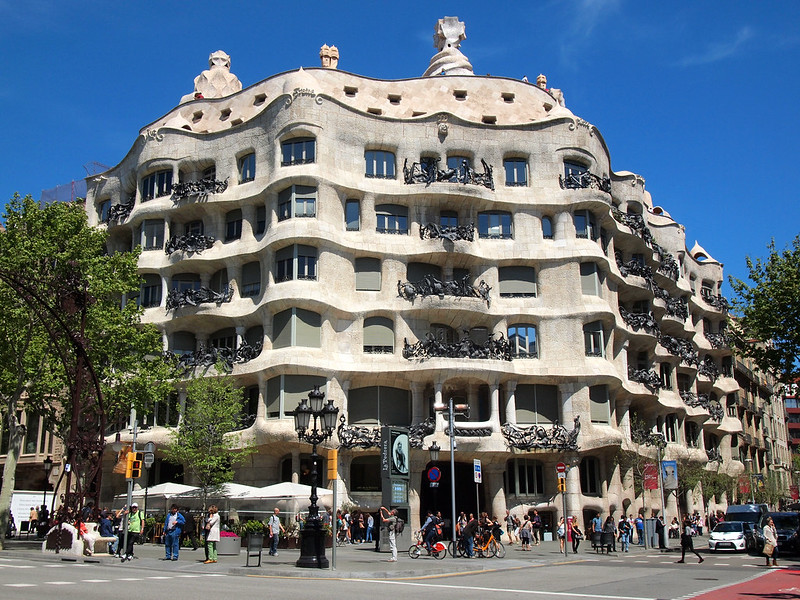









I live in Barcelona since 2000 and the more I know about his work, I think he was a genius.
Although now i live in vietnam but i will comeback here soob
I went to Barcelona in 1999 for the Millenium celebrations and found it to be an amazing place. Unfortunately, I didn’t get to see the inside of the Gaudi exhibition because it was closed for the holidays.
Ah, well that’s a very good reason to go back someday then!
We just returned from Barcelona. I was fascinated by the architecture there. So intricate.
I LOVE Gaudi and all the other cool architecture in Barcelona!
I loved all your photos! Gaudi’s work is amazing. Casa Batllo is so unique inside and out. Was Sagrada Familia your favorite stop of the whole trip?
Sagrada Familia was definitely very special! It’s probably my favorite Gaudi building I saw in Barcelona, yes.
I am lucky enough to live in Barcelona and the more I know about his work, the more I think he was a genius. The way he got inspiration from Mother Nature is fascinating and the intricate details are just everywhere (even on sidewalks and lamps on the street!).
I agree! “Genius” is really the only word to describe him!
[…] all the Gaudi architecture in Barcelona […]
Great Posts, thanks for the sharing best architecture of Antoni Gaud in Barcelona. He was a Spanish Catalan architect from Reus/Riudoms and the best known practitioner of Catalan Modernism. Gaudí’s works reflect an individualized and distinctive style. Most are located in Barcelona, including his magnum opus, the Sagrada Family.
Gaudí’s work was influenced by his passions in life: architecture, nature, and religion. Gaudí considered every detail of his creations and integrated into his architecture such crafts as ceramics, stained glass, wrought ironwork forging and carpentry. He also introduced new techniques in the treatment of materials, such as trencadís which used waste ceramic pieces.
Under the influence of neo-Gothic art and Oriental techniques, Gaudí became part of the Modernista movement which was reaching its peak in the late 19th and early 20th centuries. His work transcended mainstream Modernisme, culminating in an organic style inspired by natural forms. Gaudí rarely drew detailed plans of his works, instead preferring to create them as three-dimensional scale models and molding the details as he conceived them.
Gaudí’s work enjoys global popularity and continuing admiration and study by architects. His masterpiece, the still-incomplete Sagrada Família, is the most-visited monument in Spain. Between 1984 and 2005, seven of his works were declared World Heritage Sites by UNESCO. Gaudí’s Roman Catholic faith intensified during his life and religious images appear in many of his works. This earned him the nickname “God’s Architect” and led to calls for his beatification.
Gaudí’s works in Barcelona are absolutely marvelous. If you stay longer in the area, you should also go to Sant Joan Despí, a village close to the city. There you can find great buildings created by Gaudí’s collaborator Jujol
http://knipsartist.wordpress.com/2015/12/02/katalanische-zuckerwatte/
Nearby there is also Colònia Güell with Gaudí’s incredible 1st church, the crypta
http://knipsartist.wordpress.com/2015/12/07/kirchenfenster-aus-der-zukunft/
Thanks for the suggestions! I definitely would love to eventually see more of his work in other parts of Spain!
I’m finally going to Barcelona in January and this post has made me even more excited. I’ve always wanted to see Gaudi’s Sagrada Familia but I didn’t realise there was so much more of his work around the city. My camera will be getting a bit of a work out I feel…
Definitely! He was responsible for so much all over Spain. Entry to some of the buildings can get pricey if you want to visit more than one, but the architecture really is stunning and so unique!
Amanda, what a beautiful architectural building that the Gaudi is. Looking at it makes me wonder just how much work the architects that built that structure must have done. From the structure of it, do you think architects now days use the same pattern and design found in the building?
Gaudi was one of a kind, for sure. The crew working on the Sagrada Familia today are still working off of Gaudi’s original plans, but no one can build quite like he did!
[…] upon a time, a man named Antoni Gaudi decided he wanted to build a […]
There are so many great examples of Gaudi’s work that it’s hard to see them all, and as you’ve shown, each one is more beautiful than the last one visited.
One I’d HIGHLY recommend is Torre Bellesguard. It’s a little more “off the path” than the traditional buildings that people visit, but well worth the visit. It’s not all that far from Parc Guell either.
Thanks for that suggestion! I’ll have to add that to my list for next time!
I visited Barcelona in 2000 and fell in love with the architecture of Gaudi – fascinating and awesome to say the least! Felt like a visit to some fairyland! Somehow could not visit the Sagrada Familia. Maybe one day will manage to visit it.
Aww, too bad you missed the Sagrada Familia! Definitely worth making another trip for. 🙂
I absolutely adore Gaudi and have visited all of his buildings at least 4 or 5 times. La Sagrada Família is such an exquisite piece of art that I always shed a tear or two of outright emotion whenever I’m inside. I hope that it never gets completed as they’ve been working on it since 1882. Anton Gaudi would be so proud!
It’s actually cheaper if you book it online, if you’re a student or family, or if you book with a hop-on-hop-off bus company, as they have discounts!
Sagrada Familia just about brought tears to my eyes, too! I’ve only had that happen in about two other buildings on earth (Hagia Sophia and St. Peter’s), so that’s definitely saying something! I kind of secretly hope they never finish it either.
[…] falling in love with Barcelona and its awesome architecture, I was reluctant to board the morning AVE train bound for Seville. I’d only had a few days in […]